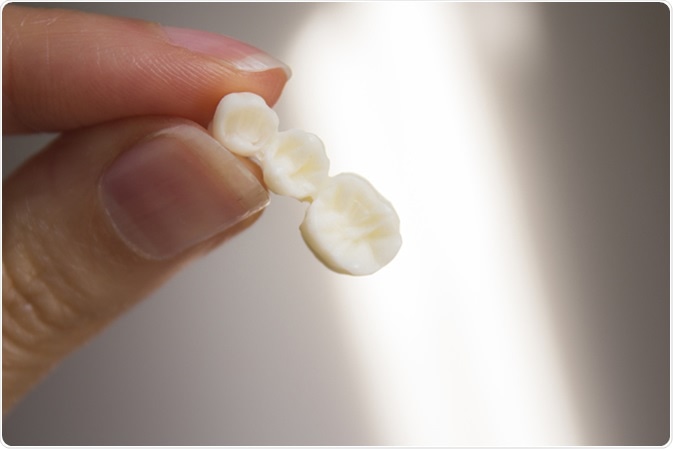The dental bridge procedure is a restorative dental treatment to replace missing teeth. The bridge fills the gap in the mouth between healthy teeth or dental implants on both sides to restore both the function and appearance of the teeth. The following article describes the procedure for installing a dental bridge.
Dental bridge: GemaIbarra / Shutterstock
Assessment
The initial step in the dental bridge procedure is to assess the need for restorative dental treatment to replace the missing teeth and whether a dental bridge is the best option. Other restorative dental treatments that may be more appropriate in some cases include dental crowns and dental implants.
The dentist usually examines the area and takes x-rays of the jaw to fully understand the situation and make the best decision. It is important to discuss the possible options with patients, including the type and design of the bridge, so that they understand the pros and cons of each alternative.
First Appointment: Tooth Preparation and Temporary Bridge Placement
Most bridges rest on the healthy teeth on either side of the gap, known as abutments. To prepare these teeth for the placement of a dental bridge, it is necessary to shape them for the bridge to be placed. Local anesthetic is used to ensure patient comfort throughout this procedure.
The first step is to file the abutment teeth into a suitable shape for the bridge placement. Impressions of the shaped teeth are then taken and sent to a dental laboratory for the construction of the bridge. The denture should closely match the surrounding natural teeth in color for aesthetic reasons, so a color sample should be taken at this point.
In some cases, a dental implant may be needed to anchor the bridge, particularly if the teeth on either side of the gap are not strong enough to support the bridge on their own.
Some patients may be fitted with a temporary bridge, which is usually made of filling material and works to protect the shaped teeth from damage during the construction of the permanent bridge. This can later be removed when the permanent bridge is ready to be placed in the mouth.
Dentist – Maryland Bridge Procedure
Second Appointment: Permanent Bridge Placement
The second appointment in the dental bridge procedure can take place once the unique appliance has been made and is ready for placement. Once again, a local anesthetic is usually applied at the beginning of this appointment to increase patient comfort.
Before the permanent dental bridge is placed, the temporary one should be removed and, if necessary, the underlying teeth cleaned. Dental cement can then be used to secure the dental bridge to the abutment teeth.
The results can then be seen and the patient can experience how it feels to gently bite the teeth together. While it should be expected that the bridge is not familiar at first, this usually wears off quickly. A few final adjustments to the bridge may be needed in some cases.
I follow
Aftercare and follow-up is very important in the dental bridge procedure to ensure that the patient knows what to expect and understands how to care for their new dental bridge. For this reason, the dentist should take some time to explain the details of the dental bridge, including recommended oral care and when to seek a dental consultation. With recommended maintenance, a dental bridge often lasts more than ten years.


